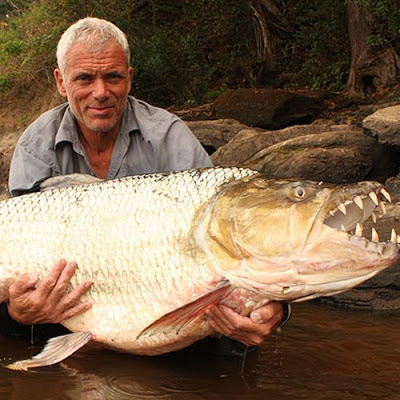
May 16, 2013

Don’t call them River Monsters! They have feelings!
I love good skeptics, I hate lazy ones. When I say this I always cite my favorites. Sharon Hill of Doubtful News and a Huffington Post contributor and Brian Dunning of Skeptoid. Most others reach for the low hanging fruit or are just contrarians. These last two category of skeptics, the fruit-pickers and the contrarians, are unimpressive. Yes, this assumes I am worthy of being impressed, and truth be known, I can’t think of a better person I would like to spend time impressing than myself.

Back to lazy skeptics, more specifically Kyle Hill (pictured left), a science writer who specializes in finding the secret science in your favorite fandom. Hill has also contributed to Wired, Nature Education, Popular Science, and io9. At least that what is says on his bio for Scientific American. Today he wrote an open letter to Animal Planet asking them not to blur the lines between real and fake using shows like River Monsters, Finding Bigfoot, and Mermaids: The New Evidence as an examples that create an uphill battle for serious science educators. Boo hoo. Science is a method, teach the method and let people educate themselves.
The gist of his argument is real fish should not be called “monsters” and mythical creatures should not be considered real. We agree, leprechauns and unicorns should not be considered real–oh wait, he’s putting Bigfoot/Sasquatch into this mythical category.
Go to Bigfoot Lunch Club to read the rest of his argument and what we have to say about it.
About Guy Edwards
Psychology reduces to biology, all biology to chemistry, chemistry to physics, and finally physics to mathematical logic.
Guy Edwards is host of the Portland, OR event HopsSquatch.com.
Filed under Bigfoot, Bigfoot Lunch Club, Cryptozoologists, Cryptozoology, Expedition Reports, Finding Bigfoot, Photos, Pop Culture, River Monsters, Skeptical Discussions, Social Media, Television